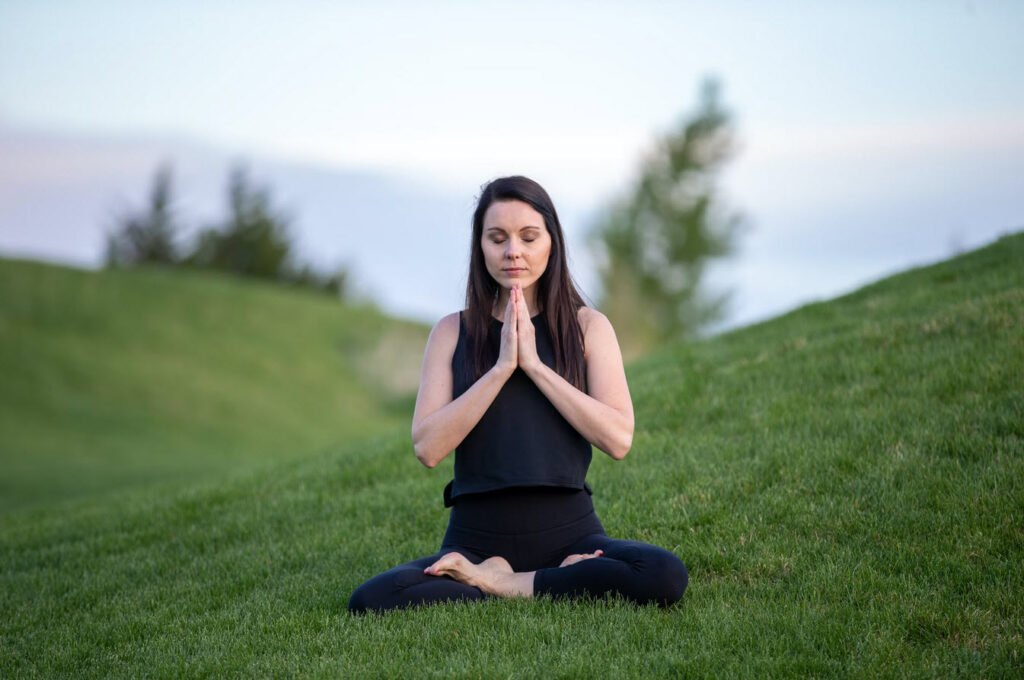
Meditation is a transformative practice that allows us to cultivate mindfulness, awareness, and inner peace. While getting started may seem challenging, it is important to remember that meditation is a journey, and progress is made through consistent effort rather than immediate mastery.
In this article, we will explore the basic instructions for mindfulness meditation, providing guidance on posture, breath awareness, and managing distractions.
- Find a comfortable posture
- Close your eyes and settle in
- Relax your body
- Observe sensations
- Focus on the breath
- Rest your attention
- Managing distractions
- Returning to the breath
- Cultivating resilience
- Ending the session
1. Find a comfortable posture: Begin by finding a posture that feels comfortable and supportive for your body. Sitting upright with your back straight is ideal, whether on a chair or a cushion on the floor. Ensure that your spine is erect, allowing for an open and alert state of mind.
2. Close your eyes and settle in: Close your eyes gently and take a few deep breaths to help calm your mind and settle into the present moment. Allow yourself to become aware of the weight of your body, grounding yourself in the present experience.
3. Relax your body: Gradually release tension from your body. Start with your jaw, neck, and shoulders, consciously letting go of any tightness or stress. Then, move down to your arms, hands, and legs, allowing them to rest in a relaxed state. Soften your muscles and let your body find a natural ease.
4. Observe sensations: With your breath returning to its natural rhythm, begin to observe the sensations present throughout your body. Notice any warmth, coolness, tingling, or areas of discomfort. Simply be aware of these sensations without attempting to change or judge them.
5. Focus on the breath: Choose one sensation, such as the feeling of your breath passing in and out of your nostrils, and direct your full attention to it. Allow other sensations to recede into the background. Pay close attention to the intricacies of breathing—the expansion and contraction of the lungs, the sensation of air passing through the nostrils.
6. Rest your attention: Select a specific spot, perhaps the indentation above your lips but below your nose, and focus on how the breath feels as it passes by that small patch of skin. Rest your attention there, being fully present with each inhalation and exhalation.
7. Managing distractions: As you continue to focus on the breath, you may notice your attention drifting away. Thoughts, bodily sensations, or external distractions may arise. When this happens, gently acknowledge the distraction without judgment, let it go, and return your attention to the breath.
8. Returning to the breath: Each time your mind wanders, acknowledge what captured your attention, and then bring your focus back to the breath. The process of recognizing distractions and regaining control of your attention is at the heart of meditation practice. Remember, it is natural for the mind to wander, so be patient with yourself.
9. Cultivating resilience: With each cycle of distraction and refocusing, you are strengthening your ability to remain present and aware. This practice of refocusing repeatedly is where the true growth and rewards of meditation lie. Embrace the journey and be compassionate with yourself as you learn to navigate the fluctuations of the mind.
10. Ending the session: When you feel ready, slowly open your eyes. Recognize that while the formal meditation session may come to a close, the mindfulness and awareness cultivated during your practice can continue throughout your day. Carry this sense of presence and calm with you as you engage with the world around you.
Remember, meditation is not a quick fix, but a lifelong practice that deepens over time. Start with just a few minutes each day and gradually increase the duration as you feel comfortable. The benefits of meditation extend beyond the moments spent on the cushion, positively influencing your overall well-being and relationships. By dedicating yourself to regular meditation practice, you can
cultivate a sense of inner peace, mindfulness, and resilience in your daily life.








